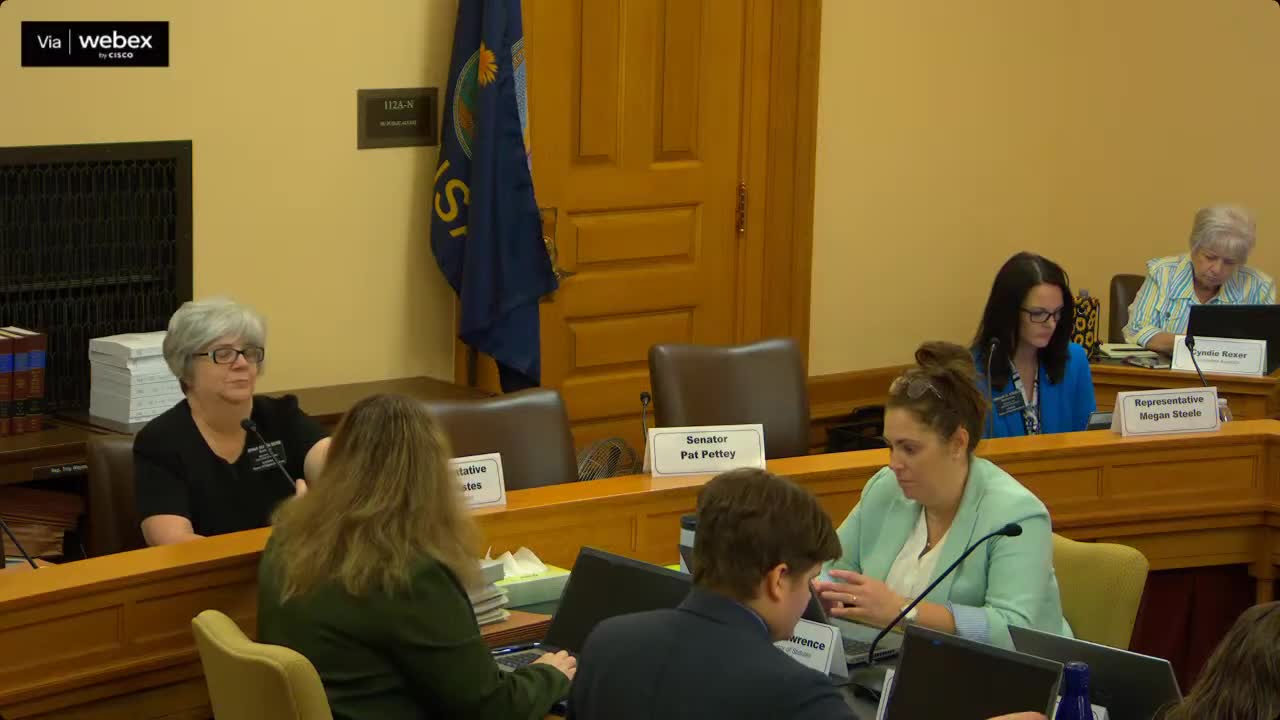Kansas Education Board Discusses Assessment Changes and Literacy Training Effects
September 04, 2025 | Special Education and Related Services Funding Task Force, Task Forces, Committees, Legislative, Kansas
This article was created by AI summarizing key points discussed. AI makes mistakes, so for full details and context, please refer to the video of the full meeting. Please report any errors so we can fix them. Report an error »

In a recent meeting of the Special Education and Related Services Funding Task Force in Kansas, discussions centered around the critical topic of education assessments and their impact on literacy instruction. As members gathered under the fluorescent lights of the conference room, the air was thick with anticipation about how new testing methods would influence student outcomes.
A key point of contention arose regarding the state’s decision to maintain the current assessment framework while implementing new literacy strategies based on the science of reading. Representative Williams raised concerns about the effectiveness of the LETRS training, questioning how the state would measure improvements in student literacy without consistent formative assessment data. “How are we going to know if all the LETRS training and efforts in the science of reading are actually effective for our kids?” she asked, highlighting the need for clear metrics to evaluate progress.
Doctor Harwood responded by explaining that the Kansas State Department of Education (KSD) had been tasked with creating a concordance table. This table would allow for comparisons between previous and current test scores, aiming to provide a clearer picture of student performance. However, Senator Erickson pointed out that the new test format, which is shorter and fundamentally different, complicates the ability to make direct comparisons. “How are we going to know if the effect is from the different test?” he questioned, emphasizing the challenge of ensuring that any observed changes in scores are genuinely reflective of student learning rather than the test's new structure.
The conversation also touched on the specifics of the new assessment, which consists of 40 questions, a change from previous formats. Members expressed a desire for historical context regarding test lengths and the number of standards per grade level to better understand the implications of these changes.
As the meeting progressed, it became clear that the task force is grappling with the complexities of educational assessments in the context of evolving literacy standards. The discussions underscored a shared commitment to ensuring that Kansas students receive effective literacy instruction, while also navigating the challenges posed by new testing methodologies. The outcomes of these deliberations could significantly shape the future of education funding and assessment practices in the state, leaving many eager to see how these changes will unfold in the coming years.
A key point of contention arose regarding the state’s decision to maintain the current assessment framework while implementing new literacy strategies based on the science of reading. Representative Williams raised concerns about the effectiveness of the LETRS training, questioning how the state would measure improvements in student literacy without consistent formative assessment data. “How are we going to know if all the LETRS training and efforts in the science of reading are actually effective for our kids?” she asked, highlighting the need for clear metrics to evaluate progress.
Doctor Harwood responded by explaining that the Kansas State Department of Education (KSD) had been tasked with creating a concordance table. This table would allow for comparisons between previous and current test scores, aiming to provide a clearer picture of student performance. However, Senator Erickson pointed out that the new test format, which is shorter and fundamentally different, complicates the ability to make direct comparisons. “How are we going to know if the effect is from the different test?” he questioned, emphasizing the challenge of ensuring that any observed changes in scores are genuinely reflective of student learning rather than the test's new structure.
The conversation also touched on the specifics of the new assessment, which consists of 40 questions, a change from previous formats. Members expressed a desire for historical context regarding test lengths and the number of standards per grade level to better understand the implications of these changes.
As the meeting progressed, it became clear that the task force is grappling with the complexities of educational assessments in the context of evolving literacy standards. The discussions underscored a shared commitment to ensuring that Kansas students receive effective literacy instruction, while also navigating the challenges posed by new testing methodologies. The outcomes of these deliberations could significantly shape the future of education funding and assessment practices in the state, leaving many eager to see how these changes will unfold in the coming years.
View full meeting
This article is based on a recent meeting—watch the full video and explore the complete transcript for deeper insights into the discussion.
View full meeting
